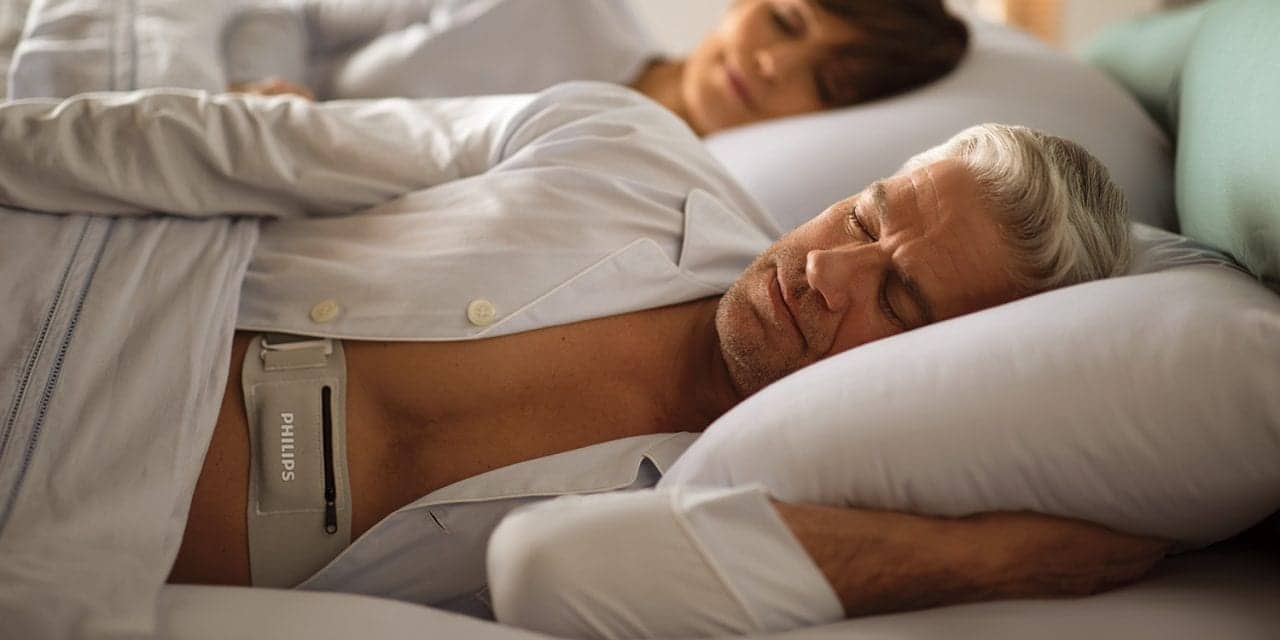Royal Philips has commercially launched the Philips NightBalance, a prescription sleep position therapy device designed for patients with positional obstructive sleep apnea (OSA).
NightBalance is a mask-free alternative to existing positional OSA treatments. The device is a clinically-validated positional therapy that uses gentle vibrations to encourage users to alter their sleeping positions to help prevent apneas.
The new Philips NightBalance positional OSA technology features wireless connectivity and a mobile app that monitors product use and provides patients and physicians with access to data via a cloud-based system.
Multiple clinical studies have found that Philips NightBalance offers an effective form of non-invasive treatment for positional OSA patients, according to the company. Most recently, a study funded by Philips in the Journal of Clinical Sleep Medicine, “The POSAtive Study: Study for the Treatment of Positional Obstructive Sleep Apnea,” found NightBalance to be a non-inferior treatment to continuous positive airway pressure (CPAP) and demonstrate high adherence rates among positional OSA patients.
In the study, data showed that patients with positional OSA felt NightBalance was easier to use, easier to adjust to and more comfortable than other PAP therapy methods. Additionally, patients who used the sleep position treatment used the device for greater lengths of time compared to PAP therapy, with 74% of patients reported using NightBalance for more than four hours, compared to 64.9%.
“We are always looking to evolve our solutions to help people living with sleep apnea take control of their health,” said Mark D’Angelo, Sleep OSA Business Leader at Philips. “The right sleep therapy varies person-to-person, and for those who suffer from positional obstructive sleep apnea, it can be defeating when traditional therapies don’t meet their specific needs. With Philips NightBalance, positional obstructive sleep apnea patients now have a non-invasive and comfortable treatment option that can be successful, resulting in long term therapy adherence.”
Today, over 100 million people worldwide suffer from obstructive sleep apnea.1 From that population, it is estimated that between 36% and 47% of these patients suffer from positional OSA, a form of sleep apnea where breathing disturbances are present when sleeping on the back.2
Without treatment, positional OSA can cause poor sleep and fatigue, ultimately impacting a patient’s quality of life. Positional sleep apnea therapy, like Philips NightBalance, is an effective form of noninvasive treatment for those living with positional OSA for whom additional therapy methods have been previously unsuccessful.
Philips NightBalance will be available through a prescription in the United States, United Kingdom, Austria, Germany, Switzerland, Belgium, the Netherlands and Luxembourg.
References
- The Official STOP-BANG Questionnaire. Retrieved from http://www.stopbang.ca/osa/prevalence.php.
- Heinzer, R. et al, Prevalence and Characteristics of Positional Sleep Apnea in the HypnoLaus Population-based cohort, Sleep Medicine 2018; 48:157-162










